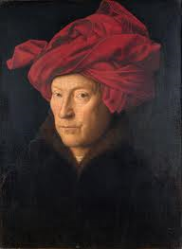The Mexican Mural Movement began in the 1920’s (right after the Revolution) and lasted through the 1940’s. Before this movement most Mexican artists were inspired by European artists, but when the movement began things started to change. Mexican artists insisted that a new school of art be built so that they would be free to make art that would reinforce Mexican identity and the principles of the Revolution. In response to the demands of his people, President Victoriano Huerto appointed Alfredo Ramos Martinez director of the Escuela Nacional de Artes Plasticas, and he started the reform. Artists were encouraged to paint murals to draw attention to Mexican history and culture. The three artistic leaders of the Mexican Mural Movement were Diego Rivera, David Alfaro Siqueiros, and Jose Clemente Orozco. I have chosen to analyze one piece from each artist.
The first piece I have chosen to analyze is Exploitation of Mexico by Spanish Conquistadors, painted by Diego Rivera in Mexico City between 1929 and 1945. Rivera was born in Guanajuato, Mexico in 1886 and began painting at a young age. He became famous in his twenties for reintroducing fresco painting into modern art. He had a romance with fellow painter Frieda Kahlo. Rivera is considered the greatest Mexican painter of the twentieth century. I picked this painting because it vividly and colorfully illustrates the native Mexican struggle against the Spanish conquistadors. I enjoy this piece because it does not sugar coat anything; people are seen being whipped, hanged, and worked to the bone. While this is quite graphic and unpleasant, it shows the true pain and suffering the Mexicans had to go through. It tells a story and is visually appealing with its crisp lines and bright colors.
The second work I have selected to investigate is Cuauhtemoc Against the Myth, painted by David Alfaro Siqueiros in Mexico City in 1944. Siqueiros was born in 1896. He was very active politically and was involved in the conflicts of the Mexican Revolution as a protestor, soldier, and demonstrator. Much of his art was influenced by the anguish of prison life, as he spent many years in jail for the actions that stemmed from his radical political beliefs. He said that “art must no longer be the expression of individual satisfaction (which) it is today, but should aim to become a fighting educative art for all.” I chose this piece because it very emotion-oriented. The people depicted in this painting look distressed, which comes across in their tense bodies and their strained faces. I found this piece interesting because the subject of focus is not in the center of the painting but is around the edges, causing the viewer’s eyes to dance across the whole work. I like this piece because it is unique.
The third painting I have decided to examine is Omnisciencia, painted by Jose Clemente Orozco in Mexico in 1925. Orozco was born in 1883. He was influenced by both Jose Posada (another famous Mexican artist) and Symbolism. He was very involved in the revolution and became a political cartoonist. I selected this work because it is very clear and detailed. Much like the previous piece, it is emotion-oriented. The person on the left seems angry and tense, the middle person is content and at peace, and the person on the right is somewhere in between. The viewer may experience several emotions while investigating this painting. I enjoy the complexity and intricacy of the details of this work, especially the furrowed brow of the subject on the left.
Works Cited
http://www.yale.edu/ynhti/curriculum/units/2006/2/06.02.01.x.html#b
http://www.pbs.org/wnet/americanmasters/episodes/diego-rivera/about-the-artist/64/
http://www.wfu.edu/history/StudentWork/fysprojects/kmason/DvASiq.htm
http://www.wfu.edu/history/StudentWork/fysprojects/kmason/Orozco.htm
















